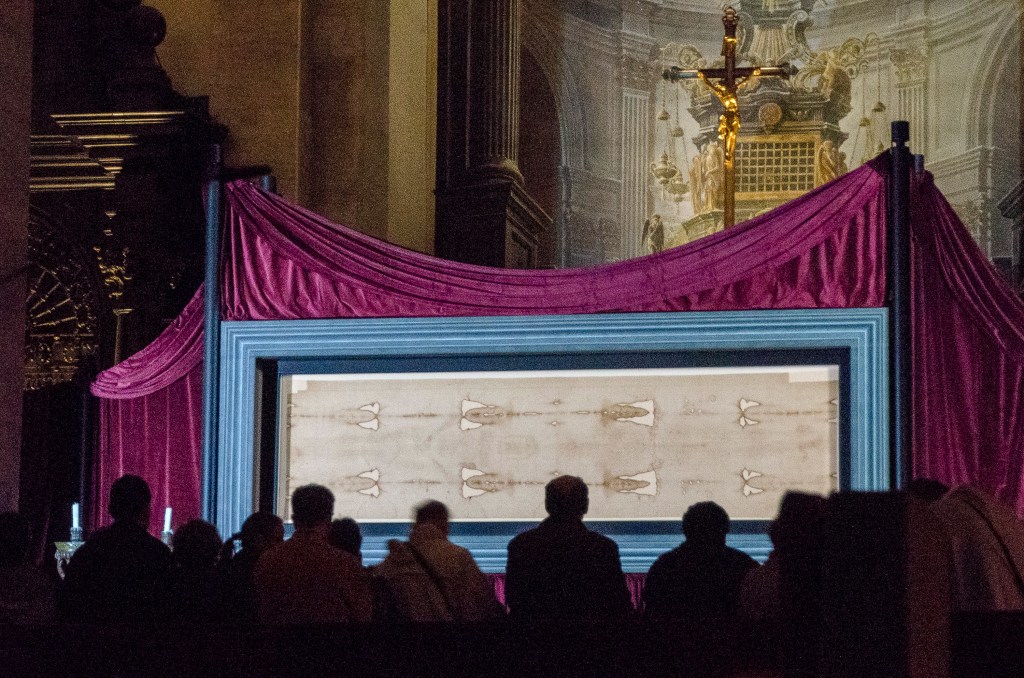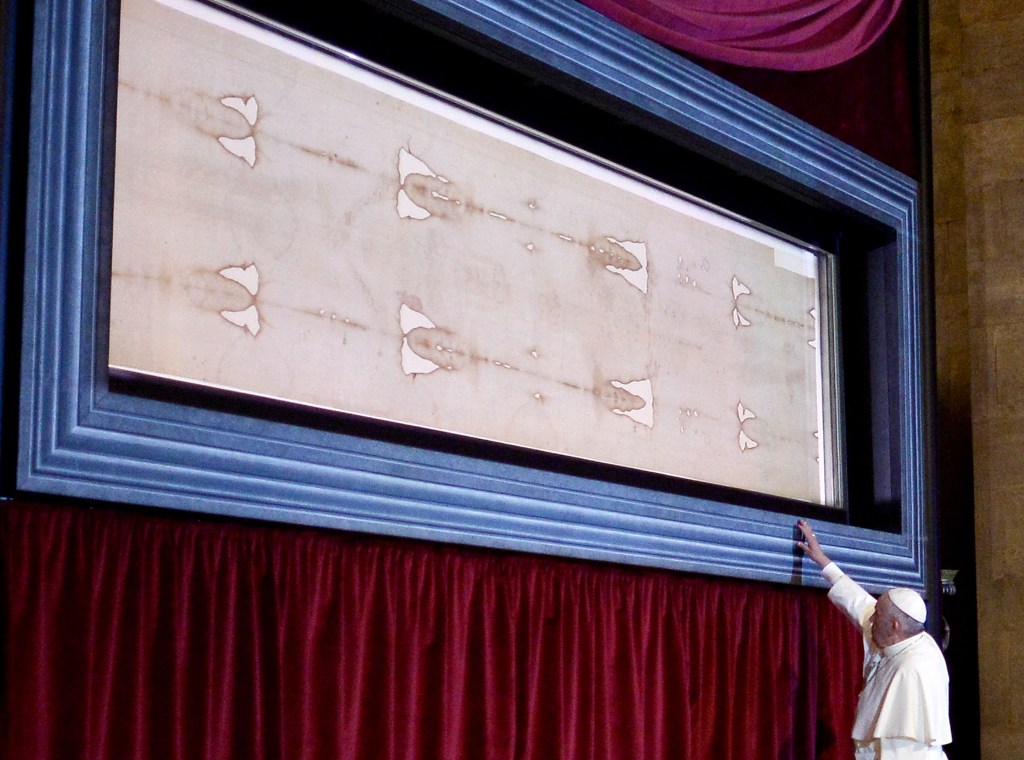Heaven help us.
A holy war is brewing after an Italian academic published a new study claiming the fabled Shroud of Turin offers evidence of Jesus Christ’s crucifixion wounds – but some of his peers say the story is cut from whole cloth.
The findings are making the rounds as controversy over the piece of cloth – argued to have been buried with the Messiah – has been reignited in recent times.

In July, University of Padua professor Giulio Fanti published a study that focused on bloodstains and “whip marks” found on the Shroud that allude to Christ’s death by being nailed to a cross – a common method execution by the Romans in his time in AD 33
Fanti claimed that “the different directions of blood flow from the side wound are discussed, the possible presence of pulmonary fluid” and “several blood stains” indicate the trauma suffered by the Savior.
The professor, who is said to have devoted a quarter of a century to his research, told the Daily Mail that he is not the first to make the connection.
“Geologist Amir Sandler of the Geological Survey of Jerusalem recognized, among other things, smectite and illite, which are typical of the soil of Jerusalem, as well as other materials coming from the winds of the Sahara,” Fanti told the newspaper.
But other experts are calling the study crucifixion, claiming the researcher is acting holier-than-thou.

The controversial fabric first appeared during the Renaissance period and is considered by some to be a forgery, considering the highly accurate facial print for which the shroud is known seems a little too perfect.
“If the shroud were to be wrapped [three dimensionally] around a body, it would leave a distorted image,” Kings College philosophy professor Dr. David Johnson told the Daily Mail.
“Not a beautiful two-dimensional ‘figure’, as if the shroud straightened and hovered over Jesus and ‘took a picture.’
A 2018 study also supports claims of forgery, as simulated tests showed that the position of Christ’s wounds did not match the bloodstains on the tapestry.
However, a 2022 study that x-rayed the Shroud has been widely circulated recently.
Italian scientist Liberato de Caro reportedly proved it matched a cloth tied from Masada, Israel, used 20 years after the supposed death of Christ.
“The experimental results are consistent with the hypothesis that the Shroud of Turin is a 2,000-year-old relic,” said the study.
Until more is realized, this mystery of faith we must bear our cross.
#Controversial #evidence #Shroud #Turin #provide #evidence #Christs #crucifixion
Image Source : nypost.com